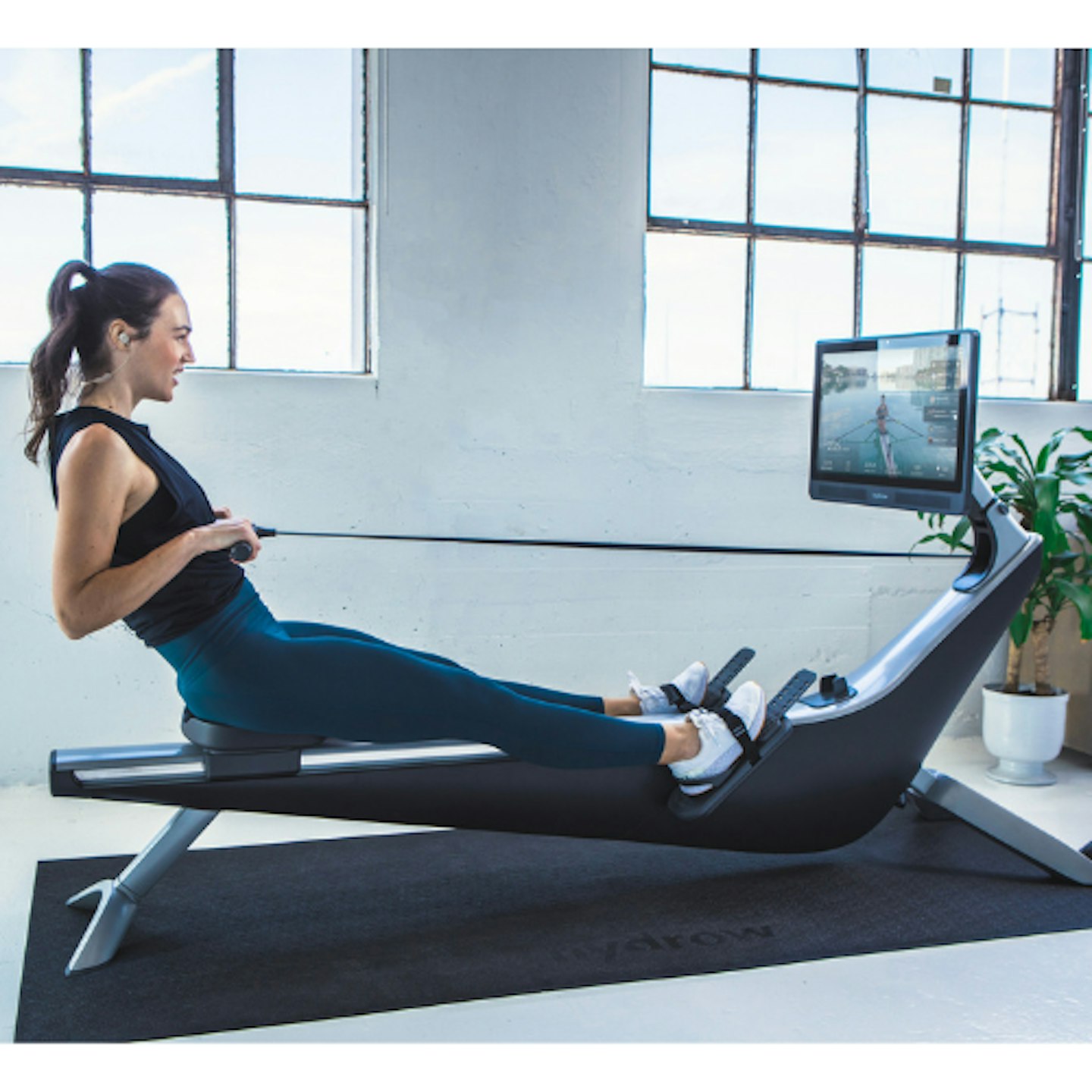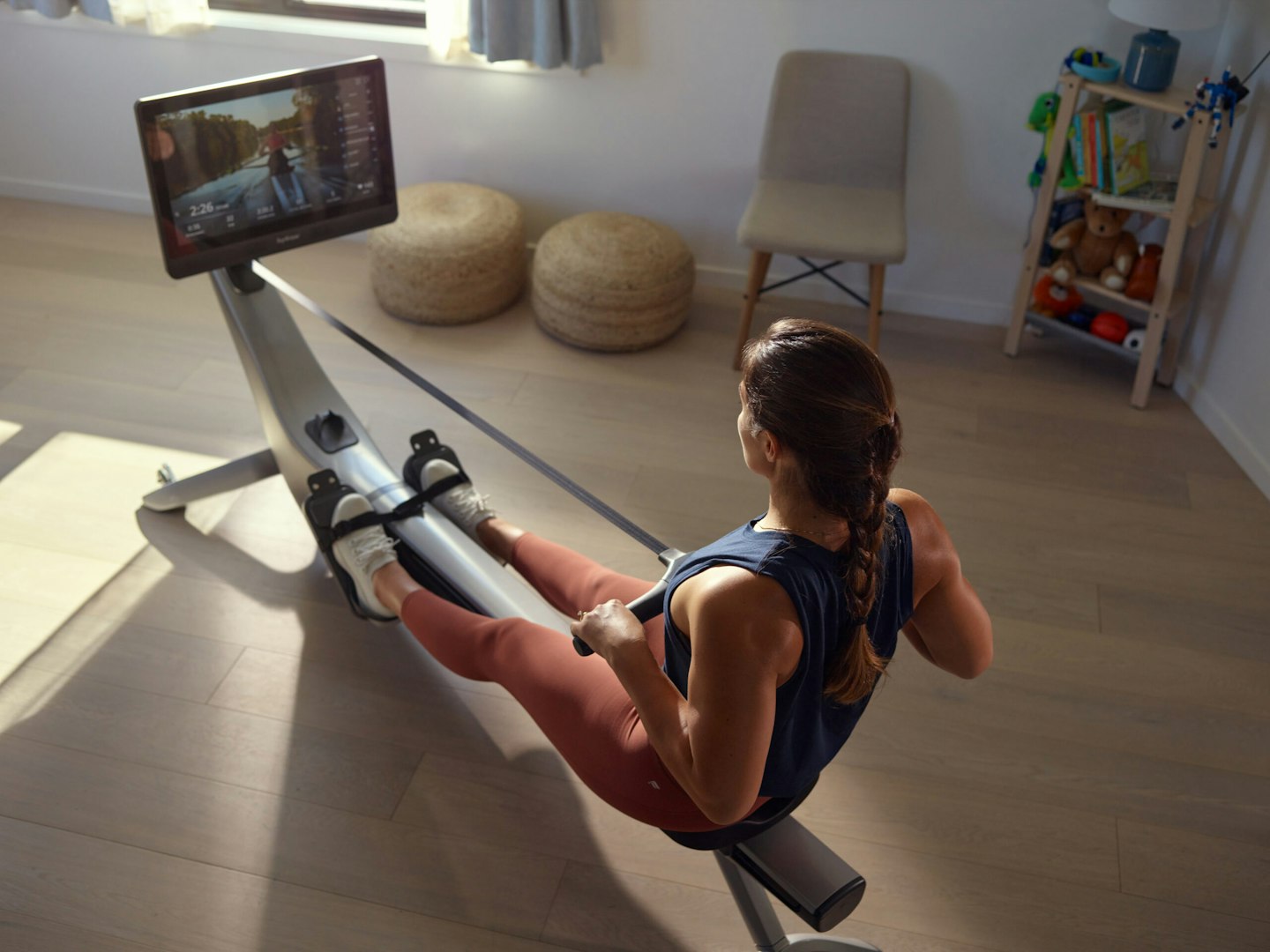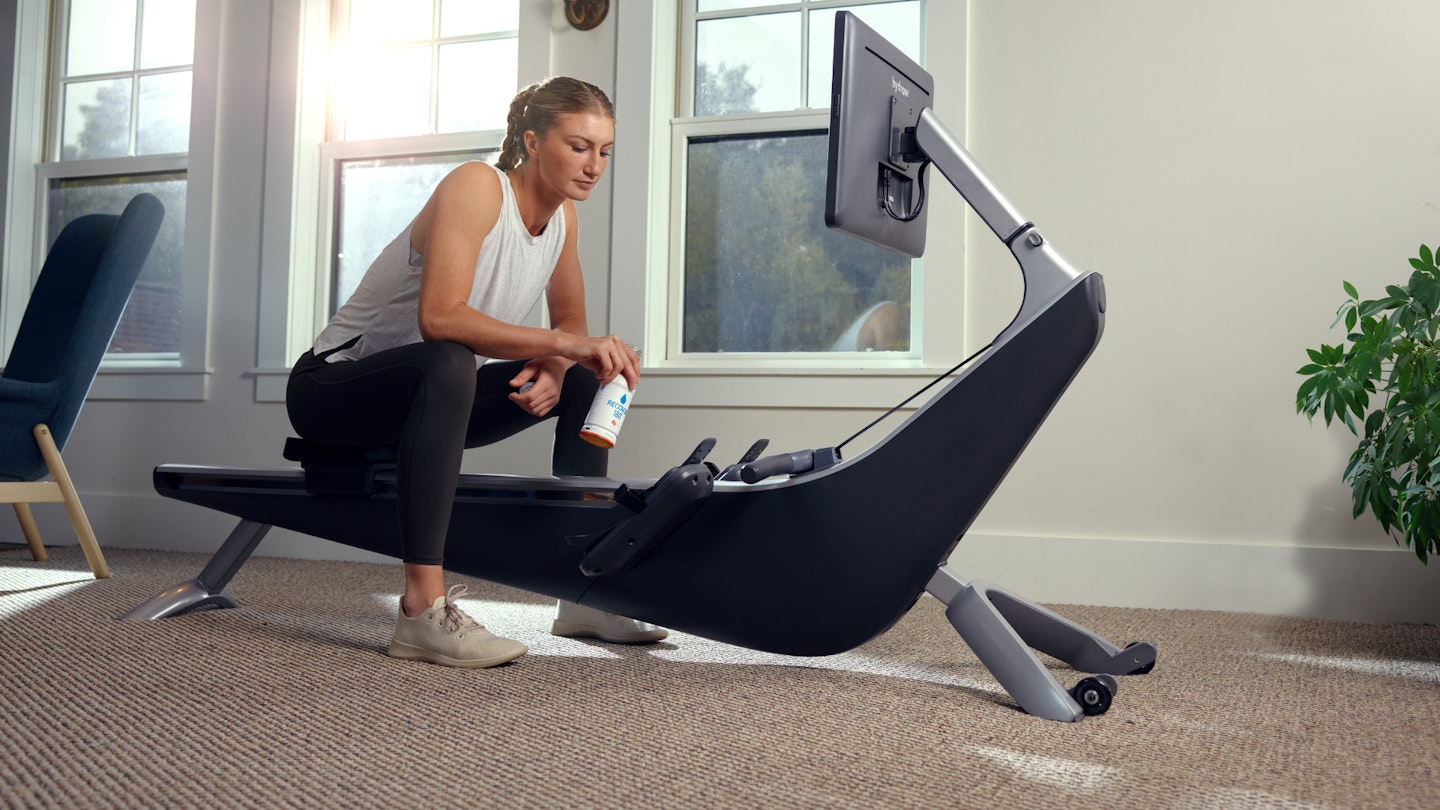A full-body workout in less than 15 minutes? That’s what the Hydrow rower promises to deliver for time-limited mums and dads.
If you’ve ever ignored the rower as a less-than-efficient piece of equipment in the gym, then now is the time to reconsider. Hydrow is an immersive, effective, fitness-for-all experience.
Whether you’re expecting your first child, want to keep fit and moving, or are adjusting to a balancing act as a parent, a 15-minute session could easily be squeezed into your busy week. It doesn't even have to be high-intensity because any exercise is a win when you're pregnant!
When it comes to the benefits of a machine like Hydrow, personal trainer and clinical exercise physiologist, Jack Macnamara explains: “The rowing machine is an excellent zero-impact choice when looking to stay active, performed in a seated upright posture throughout.
“Regardless of how tired you're feeling or how much of a struggle moving around can feel in late pregnancy, being able to perform a workout without exerting a significant toll on your body can't be taken for granted.”
He adds that it’s extremely time-efficient and comes as close to a whole-body workout in one single exercise, as it uses up to 86 per cent of the muscles in your body: “Because we incorporate so many muscles during a rowing stroke, the effort required increases. Most of the time, when you're expecting, time is at a premium.
“So, squeezing in an effective workout quickly is one benefit that rowing offers that most other forms of cardio can't.”
 1 of 1
1 of 1Hydrow Rower
Check the Hydrow site for special offers on rower packages.
What is Hydrow?
The Hydrow is a rower disrupting the connected fitness industry. It is an electromagnetic, computer-controlled drag system that creates the ultra-smooth feel of being on the water. The rower starts at £1,995, and a 30-day risk-free trial is available on all rower purchases.
The £38 monthly subscription includes unlimited profiles for your household and beyond so they can also try out the immersive experience unlike no other (Live Outdoor Reality™). There are 3000+ live and on-demand workouts, including yoga, Pilates and strength all taught by friendly professional athletes on real waterways around the world. There are also prenatal Pilates classes available for mums-to-be to dip their toes into and complement cardio rowing workouts, taught by Christie Wang, PCES (Pregnancy and Postpartum Corrective Exercise Specialist Certification).
Pre- and post-natal exercising benefits
When it comes to antenatal exercise, Jack Macnamara, who has specialised in designing pre-and post-natal exercise plans for mothers and mums-to-be for more than a decade, says it all has major benefits.
“Exercise and physical activity during the pregnancy is going to pay dividends during labour and in terms of recovery post-childbirth. This is one of the main driving factors for mothers to remain active and fit throughout their pregnancy.”
Changes in the centre of gravity can affect you after becoming pregnant and a rowing machine can be a good choice as an exercise as it provides a stable base, a reduced risk of falling from a height and is a low impact exercise.
“Our bodies utilise nearly every major muscle group in the body when we row, and since rowing recruits so many muscle groups, it's also one of the best workouts you can do. On a minute-for-minute basis, you'll burn more calories, build greater endurance, and maintain more strength and balance throughout your entire pregnancy,” adds Jack.
There is of course plenty of research that shows myriad benefits of exercise during pregnancy to both the baby and mother, but as always any exercise can carry risks, so Hydrow recommends a doctor should be consulted to make sure it’s a healthy decision.
A Hydrow sports psychologist adds: "There is mounting evidence in the literature that staying active during pregnancy can be beneficial mentally and physically to the mother both during pregnancy and post-partum, and to the baby both in utero and after birth.
"Hydrow workouts are low impact and we have a wide variety of workouts to help expectant mothers find both the intensity and type of workout that make them feel great. Our rowing workouts range from low-intensity steady-state cardio to HIIT training and start at just 10 minutes in duration. However, every pregnancy is different, and we encourage all expectant mothers to meet with their doctor before starting an exercise routine during pregnancy."

How to adjust your rowing machine (and technique) when pregnant
When using a rowing machine during your pregnancy, Jack explains how you should consider the following adjustments to make the experience safe and enjoyable.
Adjust the footplates as low as they’ll go – instead of putting the foot straps in the usual position over the ball of the foot around the widest part of your feet, place the strap instead over the top of the toes. This allows the room (with a slight outward turn on the feet) to make room for the baby bump.
Lift your bottom up and try to push your sit bones down into the seat - This essentially means attempting to tilt your pelvis into a more neutral position. Although there’ll be a slight stretch in the hamstring, this more vertical position will help you maintain a good posture through movement, which means a more efficient rowing technique and will also prove beneficial in preparing for birth.
Adapt the stroke - Due to the bump, we can make accommodations to the rowing stroke itself. On the catch (the part where you’re closest to the machine with knees bent), you’ll find you won’t be able to get as close in as before pregnancy, therefore won’t be able to get your shins vertical – this is perfectly fine. You’ll also need to allow your knees to drop out to the side a little bit to make space but aim to keep the knees as close to in line with your elbows as possible, as much wider than this may put increased pressure on the external rotators of the hip.
Coordinate your breathing - Focus on matching your breathing pattern to your movement pattern. By syncing the two you’ll be better equipped to manage the pressure in your abdominal cavity. Think about inhaling down and out as your move forward to the catch, exhaling when you drive away from the screen and extend.
Get comfortable - If you’re an inexperienced rower, you should stick to whatever position feels more comfortable. However, if you’re a more experienced rower, you should find that you’re still able to achieve a bit of reach; with a slight lean forward, you’ll be able to stack your shoulders over your mid-thigh and your hips behind your shoulders.
Lean less - Much like in earlier trimesters, avoid the lean back, which will put unwanted stress on the abdominals. You should find that you won’t be rowing as hard as you would have pre-pregnancy; therefore, you shouldn’t need a lot of lean to finish off your stroke. Overall, you’ll be vertical at the end of the stroke but still have a slight forward lean at the front end to drive through the large muscles of the legs more efficiently and avoid letting the stroke just go through the upper body. This means shortening the stroke if needed, but not as much as you may have thought initially!
Stay succinct - Keep the intervals short and take regular breaks. Listen to your body, and it’ll tell you what it likes and what it doesn’t like – When it doesn’t like it anymore, don’t do it!
